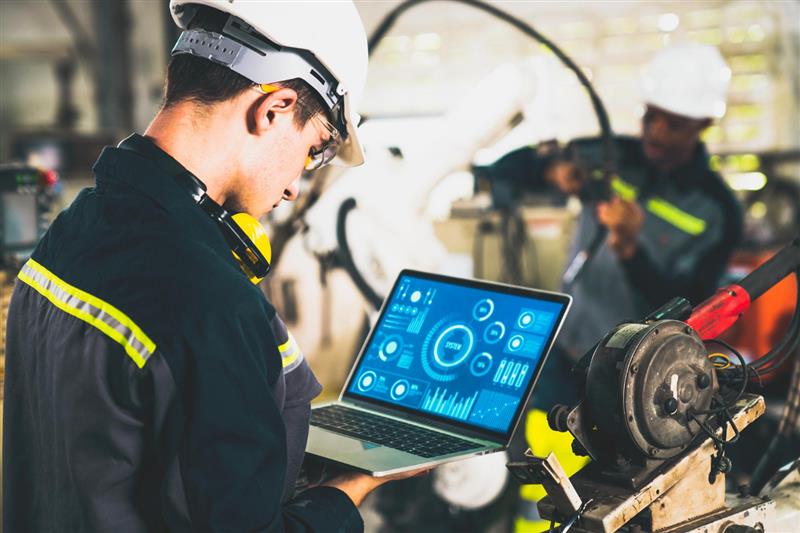CMMS Meaning Explained: A Simple Guide for Beginners
A CMMS, or Computerized Maintenance Management System, is a digital tool that helps teams keep track of maintenance tasks better by getting rid of paper, spreadsheets, and guesswork and putting everything in an organized system. Users can schedule preventive maintenance, keep track of assets, handle work orders, keep an eye on inventory, and make useful reports, all from one central platform. Even small teams can benefit from less downtime, more accountability, and the ability to make smart decisions based on real-time data. A CMMS is dynamic, works on mobile devices, and helps teams work together better than static spreadsheets.
Let's be honest: maintenance work can get messy. People forget to do things. The equipment stops working. Teams are rushing to figure out what's due, what's done, and what's behind. You're not the only one who has heard that before.
Someone might have told you to "just use a CMMS." Or maybe you came across the word while looking for ways to make your facility's workflow more efficient. You're in the right place no matter what. We're going to explain what is CMMS meaning without using any technical terms.
What does CMMS stand for?
CMMS stands for Computerized Maintenance Management System. It's a system that assists you in monitoring your maintenance activities online rather than relying on paper, spreadsheets, or sticky notes for tracking everything.
A CMMS essentially serves as your maintenance manual. It consolidates all items in a single location, such as work orders, equipment, inventory, and tasks necessary for ensuring smooth operations. You can observe things more clearly and collaborate more effectively, reducing the instances of "Why wasn't this completed?" situations
Why CMMS is Important, Even for Small Groups
The word "system" shouldn't scare you. CMMS can help you even if you don't have a big business or a lot of money. Small maintenance teams often get the most out of it.
This is why:
-
You stop using your memory and tracking things by hand.
-
Preventive scheduling allows you to anticipate failures.
-
You won’t have to face unforeseen outages or the associated blame.
-
You now possess information to back your requests and choices.
There's no need to hurry in locating documents during audits or estimate the time it took to resolve an issue. All information is monitored and saved, ensuring it's accessible whenever you require it.
What is the function of a CMMS
Let's take it apart.
You can manage five main areas with a good CMMS:
1. Orders of Work
From a single dashboard, you can create, assign, and close maintenance tasks. No more lost paperwork or mixed-up priorities because technicians can get notified, change the status, and leave notes without having to go back and forth.
2. Maintenance to keep things from breaking
Plan ahead for regular tasks. You decide how often to change the oil, replace the filters, and do inspections, and the system reminds your team. It takes away the need to guess and forget.
3. Keeping track of assets
You should always know where your tools are, how they're working, and what you've done to them. This history helps you plan better, see patterns, and explain why you need to make upgrades.
4. Keeping track of stock
Keep an eye on your parts and supplies so you're not surprised when you need to fix something. Some systems even let you reorder right away when stock runs low.
5. Reports and Ideas
CMMS tools turn your daily tasks into data that you can actually use. They do this by giving you weekly task summaries, asset costs, and technician performance.
What is the big deal about CMMS and spreadsheets?
You may already be using spreadsheets to keep track of your maintenance work. But here's the thing: Spreadsheets don't change. CMMS software changes over time.
Do you need to give someone a job right away? Open the CMMS on your phone. Would you like to look at the maintenance history for a certain pump from last year? It is there, and you can find it easily. Try doing that with 500 rows and 13 tabs of Excel data.
A good CMMS also makes it easier to work together. Everyone can see the same information, update it in real time, and stay on the same page without having to send emails back and forth.
Who Needs CMMS?
Anyone in charge of keeping equipment or buildings running can use CMMS.
That means:
-
Facility managers
-
Maintenance supervisors
-
Technicians
-
Operations leaders
-
Asset managers
The industries are manufacturing, hospitality, education, and local government. CMMS should be one of the tools you use if you have buildings, machines, or systems that need work.
How to Pick the Best CMMS
There are a lot of choices, but don't let them overwhelm you.
-
Look for software that is easy to use, especially for your front-line team.
-
Has mobile access, since your team isn't always at their desks.
-
Gives you good help when you have questions.
-
Works for you now, but can grow with you.
You don't need a lot of features. You only need the right ones.
Beginning is simpler than you might believe
The positive aspect is: You aren’t required to complete everything simultaneously. You can begin with a single building, one team, or even just your maintenance schedule. Begin with a few individuals and expand from that point.
The most effective systems are those that are flexible and easy to understand. If your team is anxious about mastering new software, demonstrate how it can assist them by reducing paperwork and minimizing follow-up calls. That typically brings people on board rapidly.
Concluding Reflections
Having grasped the meaning of CMMS, you also see its importance. Merely moving to digital is not enough. It requires assuming control, being aware of the circumstances, developing better strategies, and communicating efficiently. A CMMS isn't just another technological resource to oversee; it acts as a partner that improves your business processes each day.
If your current setup feels more like a gamble instead of a plan, it might be time to make adjustments. Start with the basics, focus on what’s important, and equip your team with the tools needed to lead instead of just following.

Subscribe & get all related Blog notification.





Post your comment